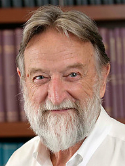| Abstract: |
Objective: The presence of macroscopic residual disease after primary cytoreductive surgery (PCS) is an important factor influencing survival for patients with high-grade serous ovarian cancer (HGSC). More research is needed to identify factors associated with having macroscopic residual disease. We analyzed 12 lifestyle and personal exposures known to be related to ovarian cancer risk or inflammation to identify those associated with having residual disease after surgery. Methods: This analysis used data on 2054 patients with advanced stage HGSC from the Ovarian Cancer Association Consortium. The exposures were body mass index, breastfeeding, oral contraceptive use, depot-medroxyprogesterone acetate use, endometriosis, first-degree family history of ovarian cancer, incomplete pregnancy, menopausal hormone therapy use, menopausal status, parity, smoking, and tubal ligation. Logistic regression models were fit to assess the association between these exposures and having residual disease following PCS. Results: Menopausal estrogen-only therapy (ET) use was associated with 33% lower odds of having macroscopic residual disease compared to never use (OR = 0.67, 95%CI 0.46–0.97, p = 0.033). Compared to nulliparous women, parous women who did not breastfeed had 36% lower odds of having residual disease (OR = 0.64, 95%CI 0.43–0.94, p = 0.022), while there was no association among parous women who breastfed (OR = 0.90, 95%CI 0.65–1.25, p = 0.53). Conclusions: The association between ET and having no macroscopic residual disease is plausible given a strong underlying biologic hypothesis between this exposure and diagnosis with HGSC. If this or the parity finding is replicated, these factors could be included in risk stratification models to determine whether HGSC patients should receive PCS or neoadjuvant chemotherapy. © 2022 Elsevier Inc. |




